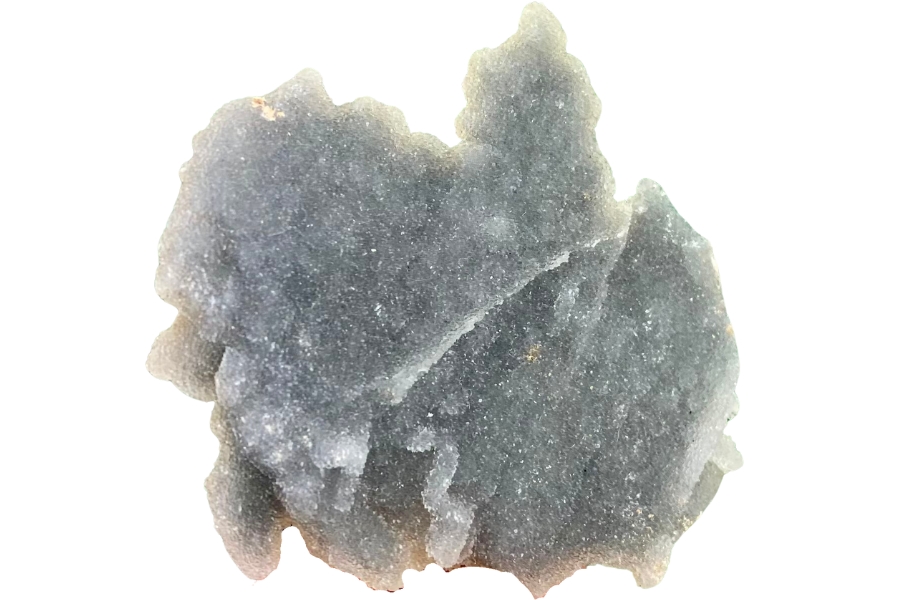When you think about elegant-looking natural treasures, you’ll probably picture sparkling grey crystals. Coming in unique shapes, sizes, and properties, these crystals’ hues can range from light grey to dark grey.
Light grey crystals often have a soft, almost misty appearance. Known for their subtle beauty, they might not be as flashy as their colorful counterparts, but they have a quiet elegance that makes them special.
On the other end, dark grey crystals are more bold and striking. Their deeper color can sometimes hide the intricate patterns and details within, which are only revealed upon close inspection.
Exploring grey crystals can be such a thrilling adventure! And if you’re curious about the most elegant ones that you can find, you can join us as we dive into the world of these natural wonders.
Our Favorite Grey Crystals
First off, we’ll share with you our favorite grey crystals. Each one is a unique snapshot of nature’s art, ready to tell its own deep, earthy story. Let’s get to know them one by one.
Grey Agate
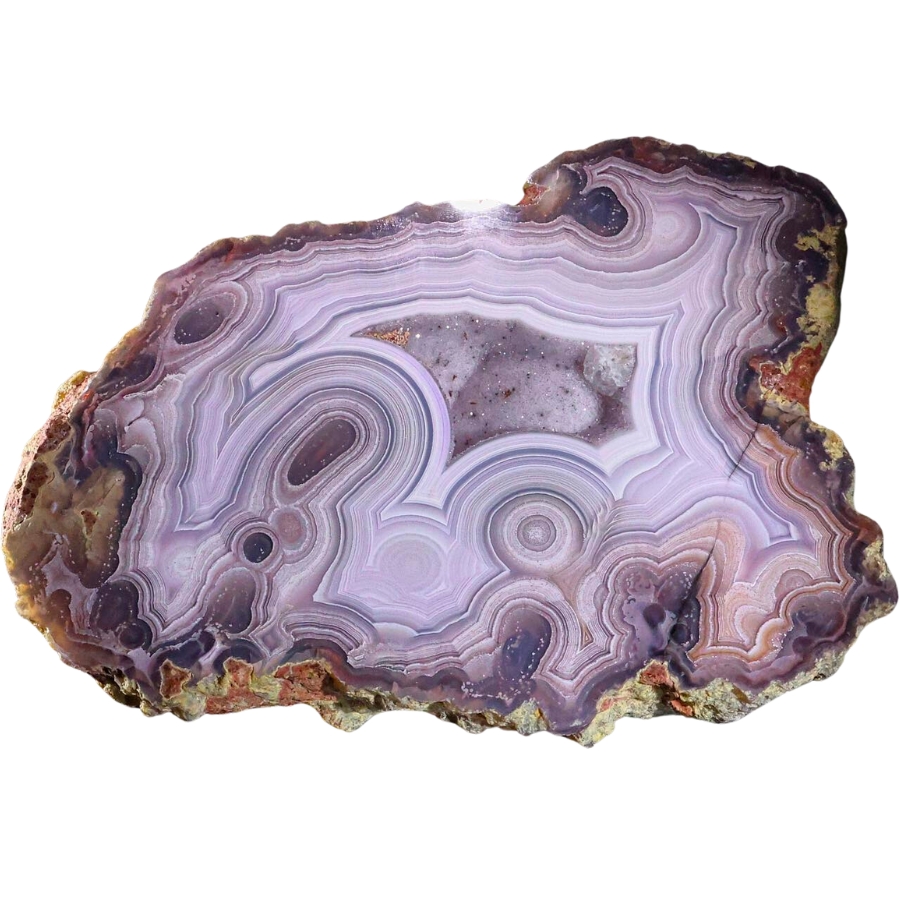
For centuries, people have treasured grey agate for its subtle beauty and strength.
Found in ancient artifacts and jewelry, this stone was often used by warriors for protection and strength. Its banded patterns, each unique, were believed to ward off storms and bad dreams.
Cultures worldwide value grey agate for its calming properties, helping to balance emotions and bring harmony.
Agate’s value comes from its blend of beauty, durability, and the soothing energy it’s said to provide. As a tool for artisans and a talisman for healers, it remains a cherished stone.
Labradorite
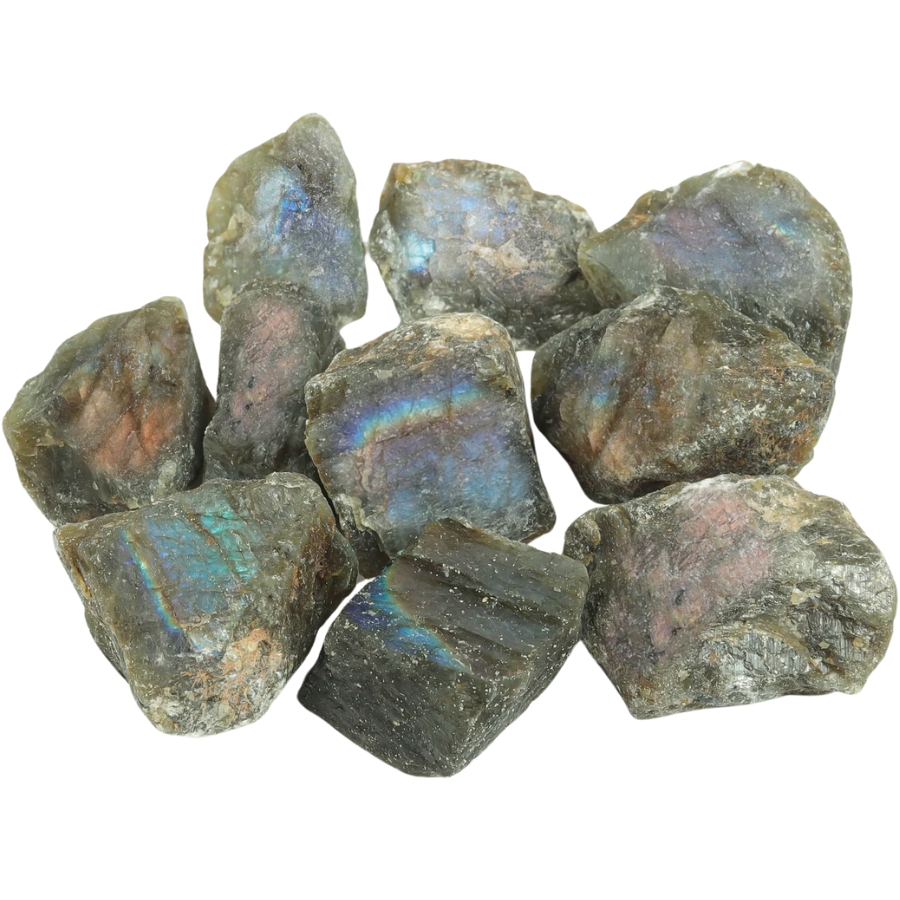
With its mesmerizing play of colors, labradorite has been captivating hearts for centuries.
First discovered on the Isle of Paul in Canada, this stone quickly gained popularity for its stunning flashes of blue and green.
Ancient Inuit tribes believed labradorite fell from the frozen fire of the Aurora Borealis, anointing it with mystical properties.
The worth of labradorite isn’t just in its beauty. It has been used in healing practices and as a tool for self-discovery.
People value it for its ability to inspire and protect, making it a beloved choice for jewelry and spiritual work. Its unique charm and perceived powers keep its legacy alive.
Smoky quartz
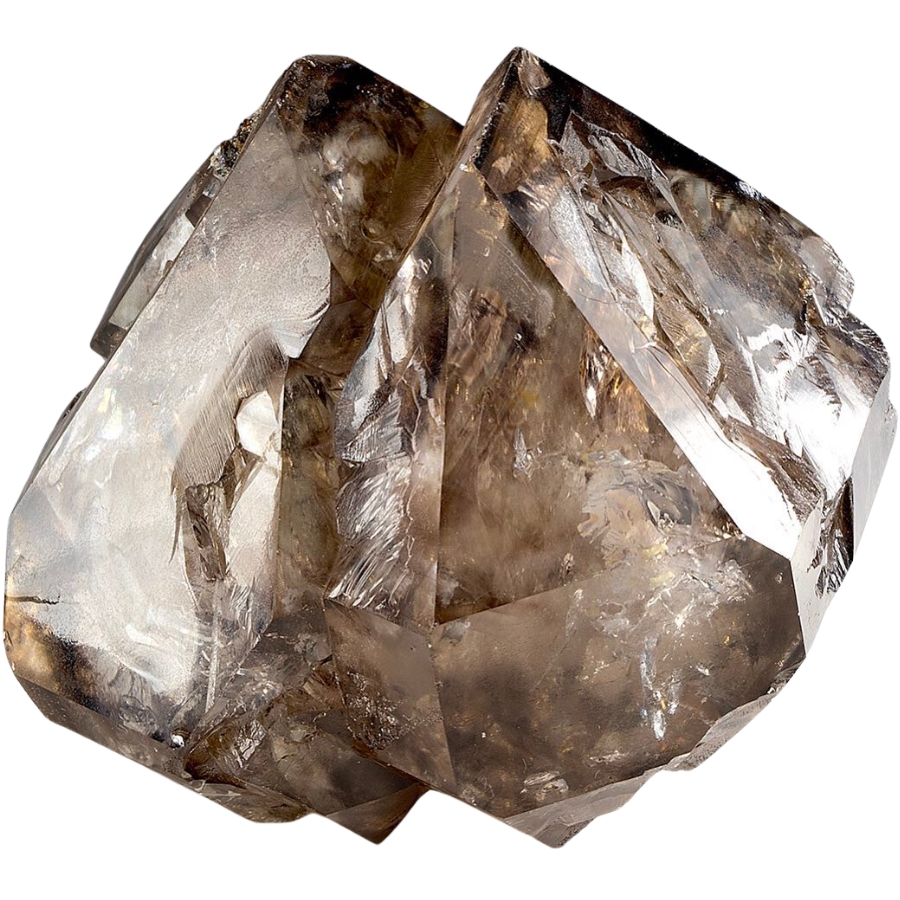
Smoky quartz, with its rich, earthy tones, has been a favorite since ancient times.
Ranging from light grey to deep brown, its color comes from natural radiation interacting with aluminum traces in the crystal.
Used by many cultures as a protective stone, smoky quartz was believed to guard homes and hearts against negative energy. It’s also been a symbol of power and status, often worn as amulets or in royal jewelry.
Smoky quartz’s price reflects its versatility in fashion and its role in spiritual practices, offering grounding and calming vibes. Its enduring popularity lies in its beauty and the sense of peace it brings.
Hematite
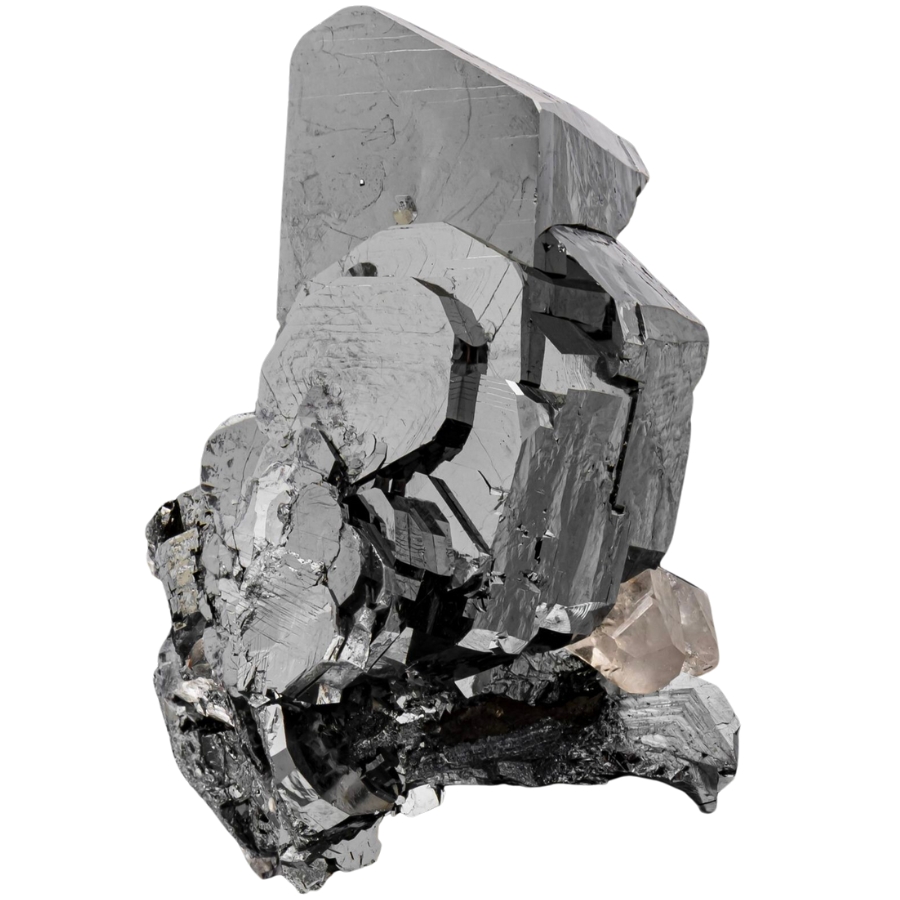
Another grey crystal in our favorites list is hematite with a shiny, metallic luster and rich grey color.
It has a long history dating back to ancient Egypt and Rome, where it was used for amulets and seals. This stone was believed to protect soldiers in battle and ground them in reality.
Throughout the ages, hematite has been valued for its supposed healing properties, thought to improve blood flow and relieve pain.
The value of hematite lies in its beauty and the belief in its healing and protective powers. It’s popular in jewelry and as a grounding stone, offering a sense of balance and calm to those who keep it close.
Grey Chalcedony
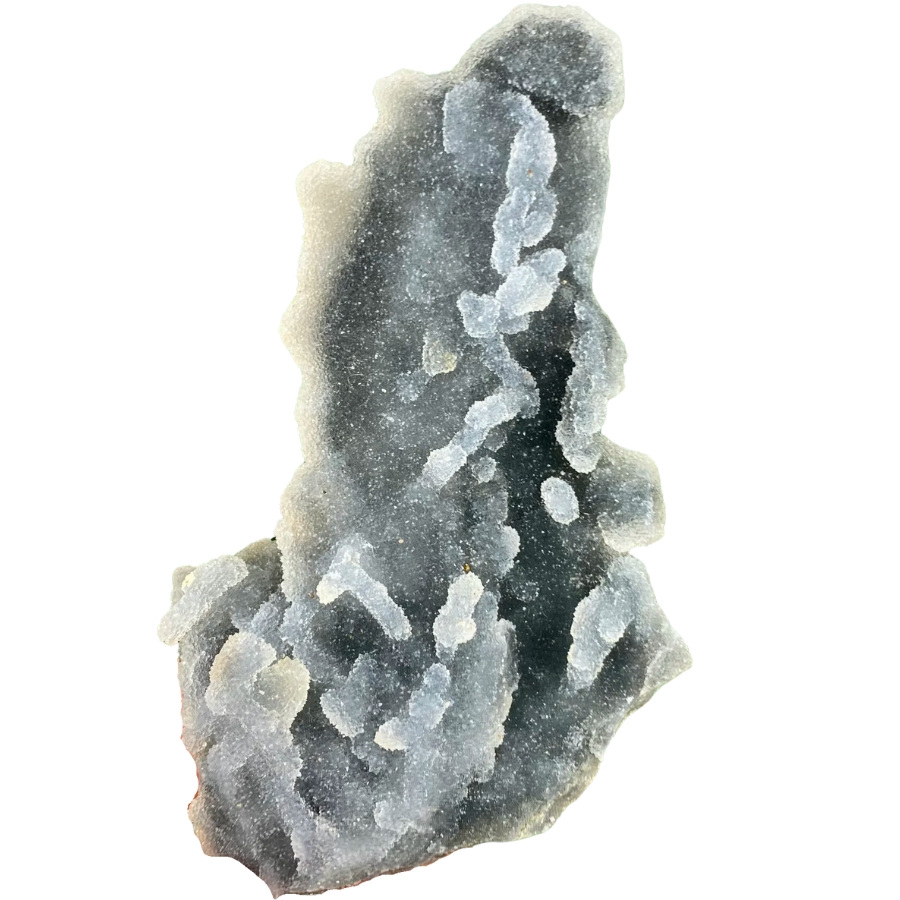
Grey chalcedony, a stone with a silky, waxy luster, has been cherished for thousands of years.
Ancient civilizations used it for carvings, tools, and jewelry, admiring its subtle elegance and smooth finish. It was believed to absorb negative energy and bring harmony, making it a favorite for amulets and talismans.
Chalcedony’s price reflects its timeless appeal and the belief in its soothing properties. People value grey ones, in particular, for their understated beauty and the sense of calm it’s thought to provide.
Grey chalcedony, without a doubt, is a sought-after stone for both its aesthetic and emotional benefits.
Grey Fluorite
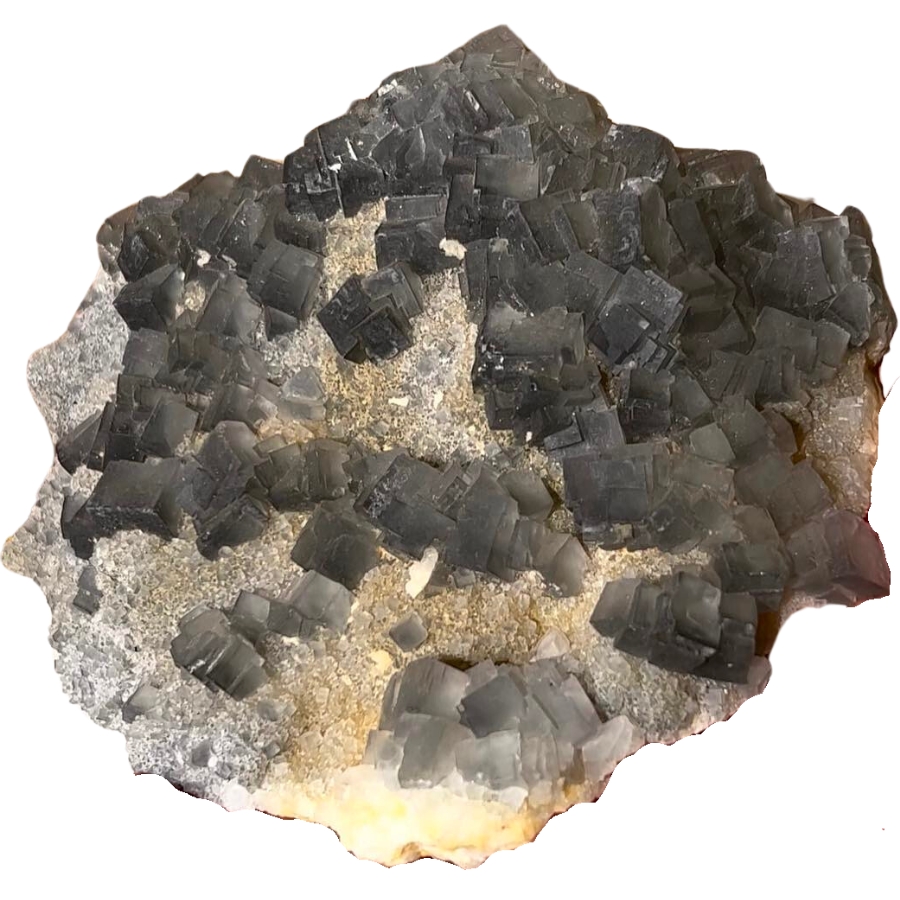
Known for its stunning clarity and cubic structure, grey fluorite has a rich history. Ancient Romans believed this crystal could prevent drunkenness and foster clear thinking.
Over the centuries, it’s been used in carving intricate figures and making beautiful jewelry.
The value of fluorite lies in its range of colors, with grey being especially prized for its subtle elegance and the way it catches the light.
People also cherish grey fluorite for its supposed ability to clear the mind and enhance focus. Its unique beauty and the belief in its mental clarity benefits make it a treasured stone in many cultures.
Dark Grey Crystals
In this section, you’ll get to know some of the most elegant dark grey crystals. They’re like the mysterious shadows of the crystal world. With their deep, rich hues, these dark grey crystals can captivate your interest, too.
Obsidian
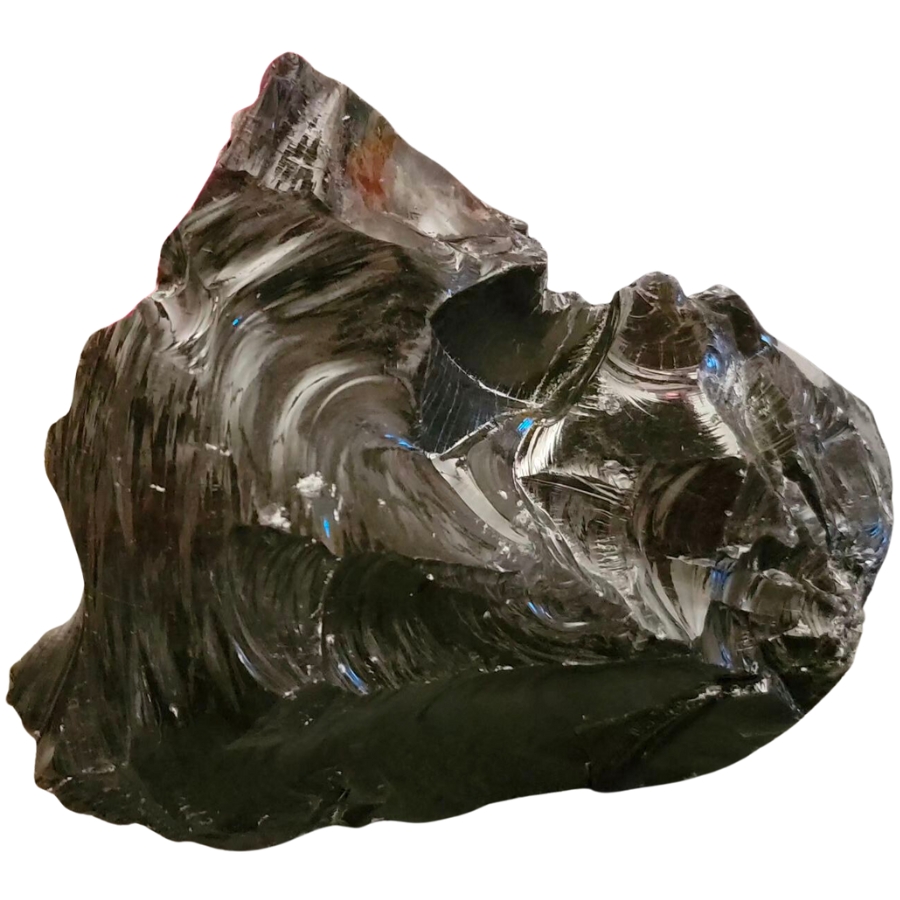
Obsidian, one of the most captivating dark grey crystals, forms when lava cools quickly.
Ancient people first discovered its sharp edges and used it for tools and weapons, valuing its durability and sharpness. Over time, obsidian became a gem of beauty and mystery, believed to protect and heal.
The value of obsidian lies in both its practical uses and its spiritual significance; it’s thought to ground and clear negative energy.
Today, its sleek, dark surface continues to draw people in, making it a favorite for jewelry, healing practices, and those simply seeking the unique beauty of natural glass.
Grey Pearl
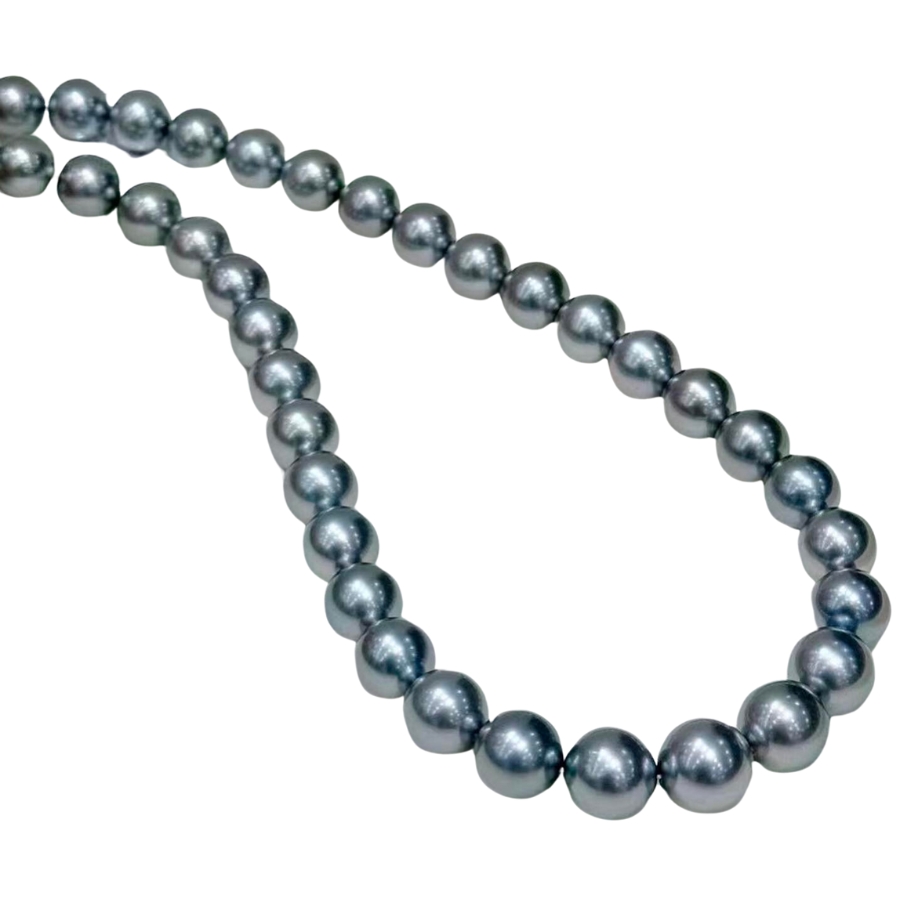
With their soft luster and understated elegance, grey pearl has been a treasure of the sea for centuries.
Unlike the usual shimmering whites, this dark grey crystal offers a deeper, more mysterious allure.
Pearls form inside oysters as a natural defense against irritants, and finding a grey one is a rare delight. Historically, they’ve adorned royalty and been symbols of wealth and sophistication.
The value of a pearl, in general, lies in its rarity and the unique beauty it brings to any piece of jewelry. Its subtle charm and elegance make it a timeless treasure, sought after for its natural, understated sophistication.
Garnet
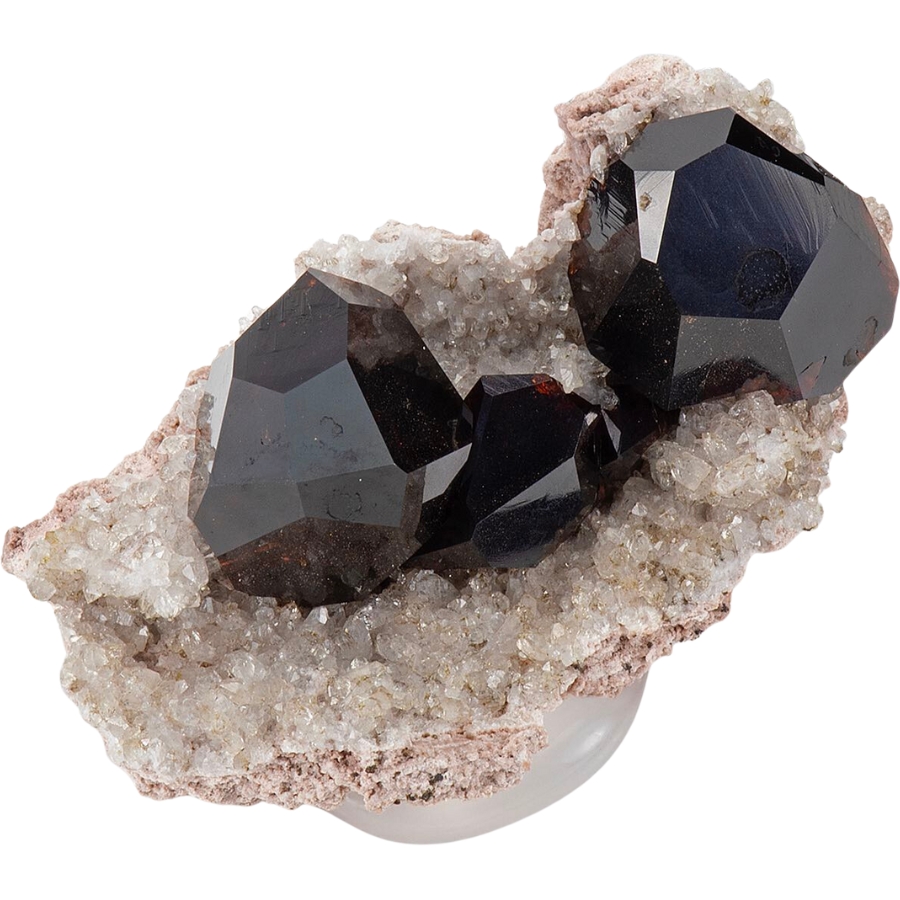
Garnet, known for its rich reds, also comes in captivating dark grey shades. This gem has been used since ancient times, found in jewelry and as an abrasive.
Warriors once carried garnet as a talisman for protection and healing. The stone’s durability and beauty made it a staple in royal treasures and artisan crafts.
Garnet’s price reflects its long-standing popularity and the belief in its powers to energize and renew.
People value them for their unique color, rarity, and the touch of elegance they add to any piece, making them a cherished choice among dark grey crystals.
Grey Spinel
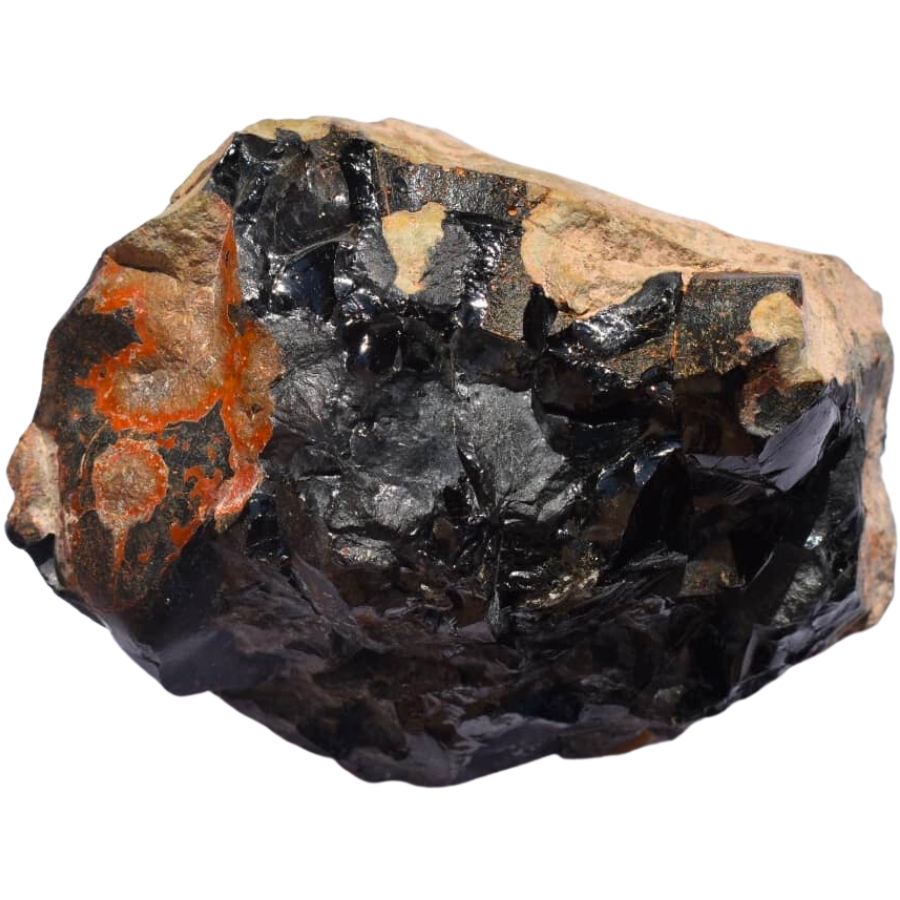
Grey spinel was once mistaken for other gems like ruby and sapphire. In time, it stood out with its unique beauty and hardness.
Kings and queens treasured it in their crowns and jewelry, valuing its rarity and the elegance it added to their regalia.
Grey spinel was also believed to soothe away stress and bring clarity to its wearer. Its value lies in its distinct color and the sense of calm it’s thought to provide.
To this day, it continues to be cherished for its understated beauty and elegance.
Grey Onyx
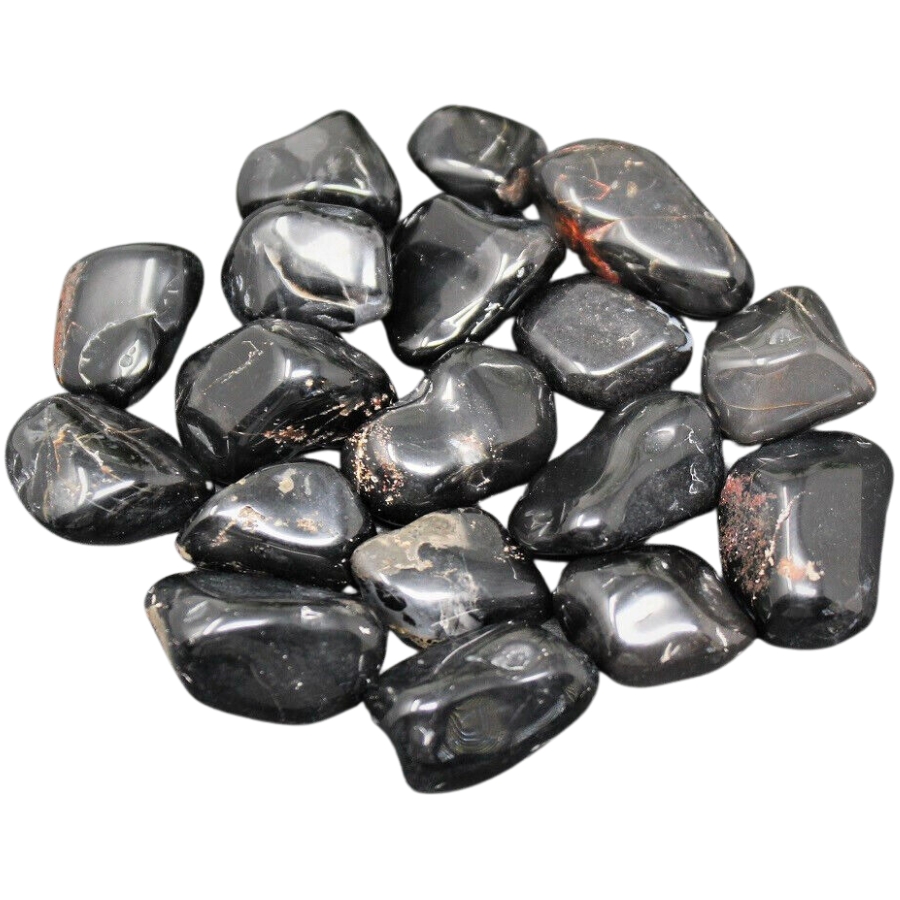
Grey onyx, a sleek dark grey crystal, has been cherished for thousands of years. In the past, it used to be carved into beautiful jewelry and amulets, believing it could protect and strengthen them.
Its smooth, polished surface and layered bands create a striking appearance, making it popular for both fashion and interior design.
The value of onyx lies in its unique look and the sense of confidence and power it’s thought to bestow.
People admire it for its bold, sophisticated presence and the stability and focus it’s believed to provide.
Algodonite
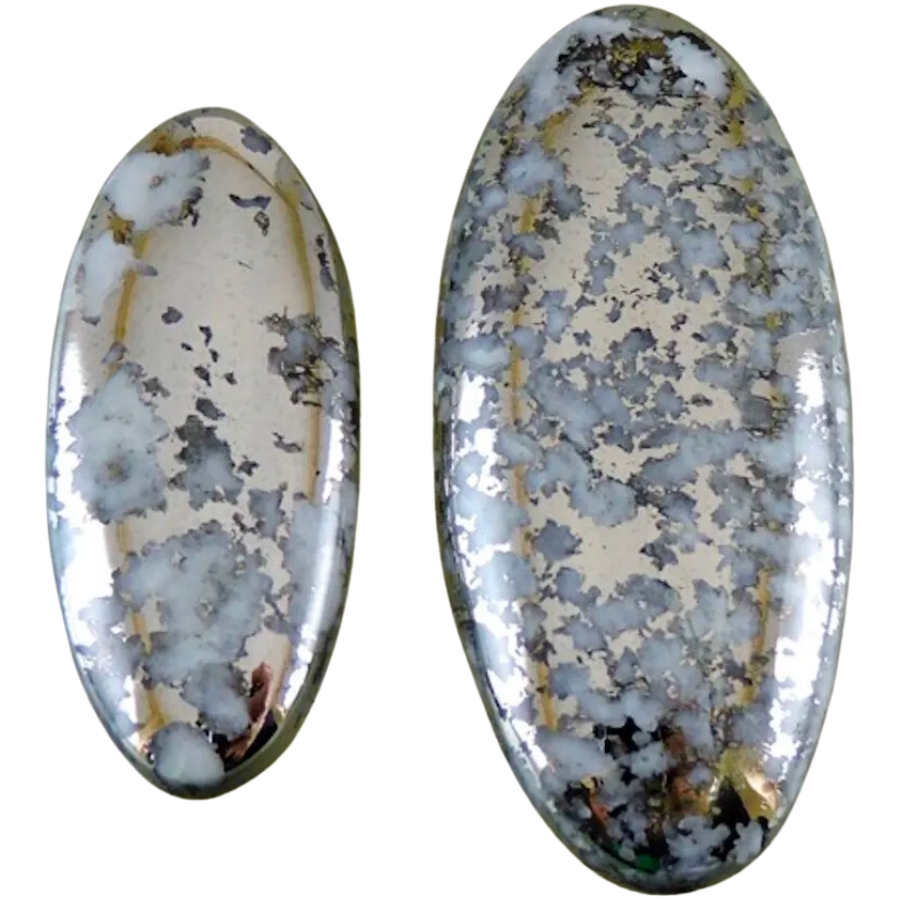
Algodonite may not be a well-known dark grey crystal as it is quite rare. It was first discovered in the mid-1800s in Chile.
This copper arsenide mineral, with its metallic luster and dark color, was initially intriguing to miners and later caught the attention of collectors and researchers.
Its rarity and unique composition make algodonite highly valued among those who appreciate uncommon minerals.
While not widely used in mainstream jewelry or industry due to its scarcity, algodonite holds a special place in the hearts of collectors and enthusiasts who treasure it for its distinctive appearance and fascinating properties.
Grey Tourmaline
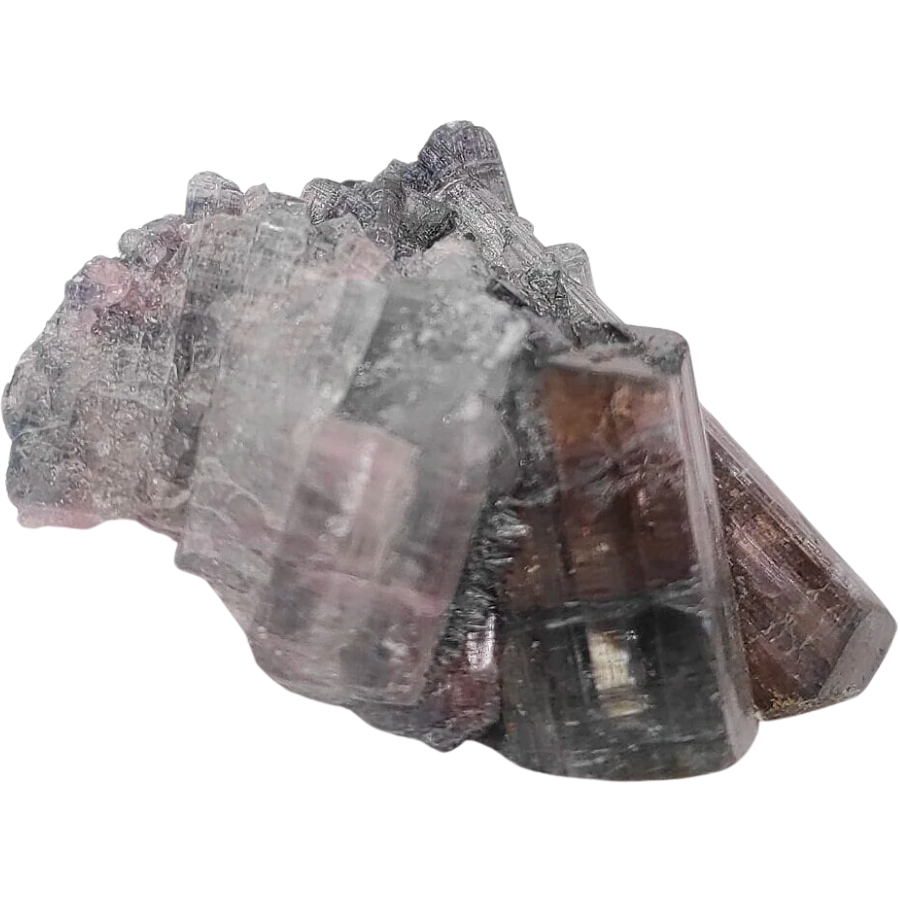
Grey tourmaline has been known for centuries. Its journey began when traders brought it from Sri Lanka to Europe, fascinating everyone with its ability to attract and repel hot ashes.
This unique property led to its use in Dutch cleaning pipes and as a tool for artists.
The price of tourmaline varies, reflecting its rarity and the demand for its soothing colors and believed healing properties.
It’s been valued for its grounding effect and protection against negative energy. These make it a popular choice for jewelry and personal amulets.
Light Grey Crystals
Now, let’s proceed to some of the most elegant light grey crystals that are a delight to see. These subtle beauties have soft tones and a calming presence. Their color is gentle yet full of mystery and charm, which you’ll see for yourself below.
Grey opal
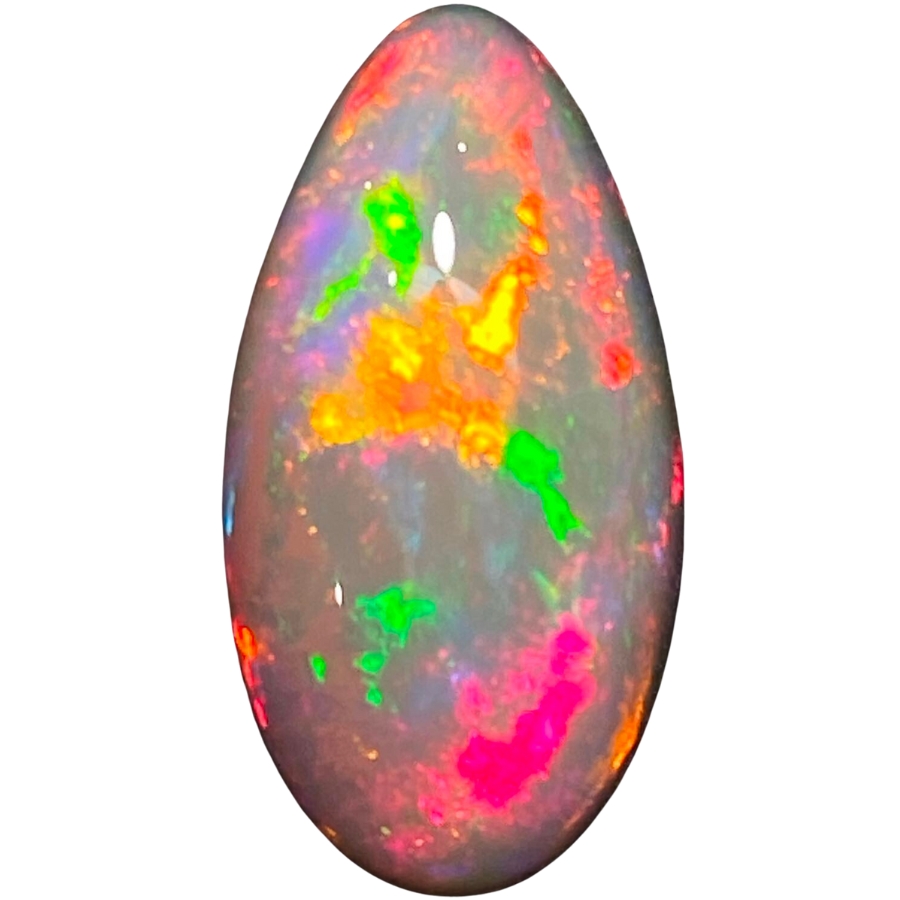
Grey opal is a captivating light grey crystal that you may already know about. It has been treasured since antiquity.
Its play of color and shimmering beauty caught the eyes of ancient Romans and Greeks, who believed it could provide foresight and protection.
Opal’s value comes from its unique patterns, with each stone displaying a one-of-a-kind array of colors that dance in the light.
With its understated elegance, grey opal is especially loved for its soothing appearance and the way it reflects a spectrum of colors. People cherish it for its beauty and the personal connection they feel to the colors hidden within its depths.
Amblygonite
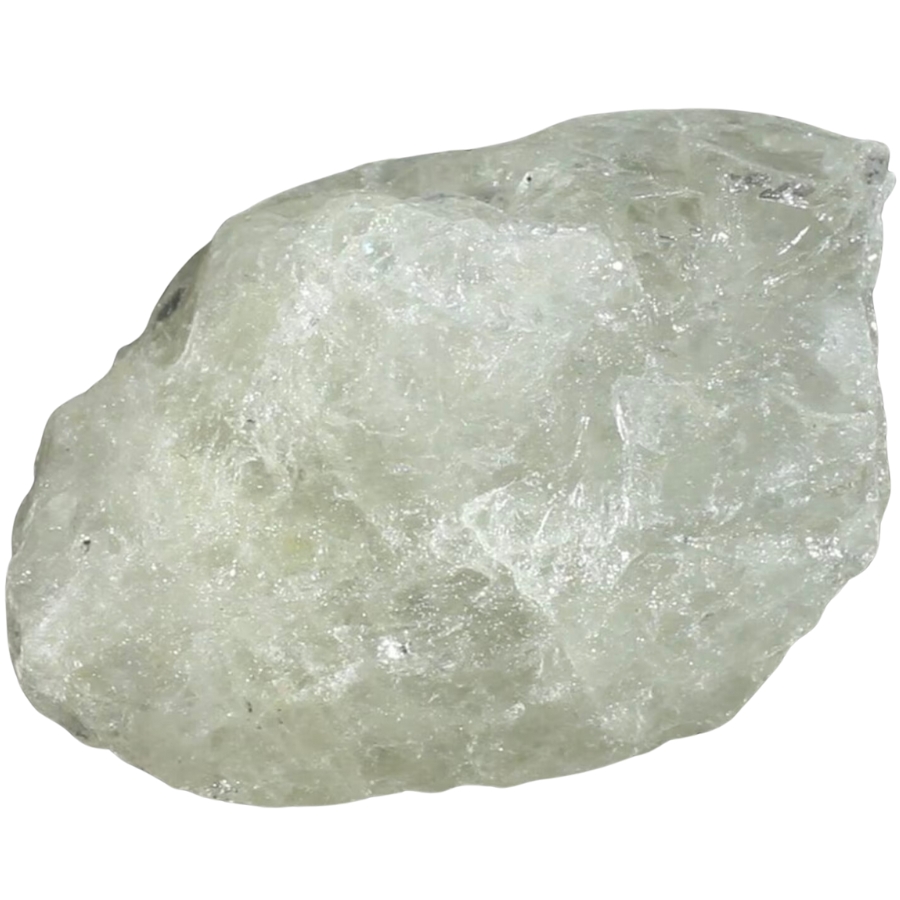
Amblygonite was first discovered in the 1800s. This gemstone is often found in lithium-rich areas and was initially mistaken for other minerals until its unique properties were understood.
Amblygonite is known for its phosphorous content, which makes it useful in certain industrial processes.
Its value comes from its rarity and the subtle beauty it displays, especially when cut and polished for jewelry.
Collectors and gem lovers treasure amblygonite for its gentle color and the soft, soothing presence it brings to any collection or piece it adorns. Its distinct character keeps it admired and valued.
Star Sapphire
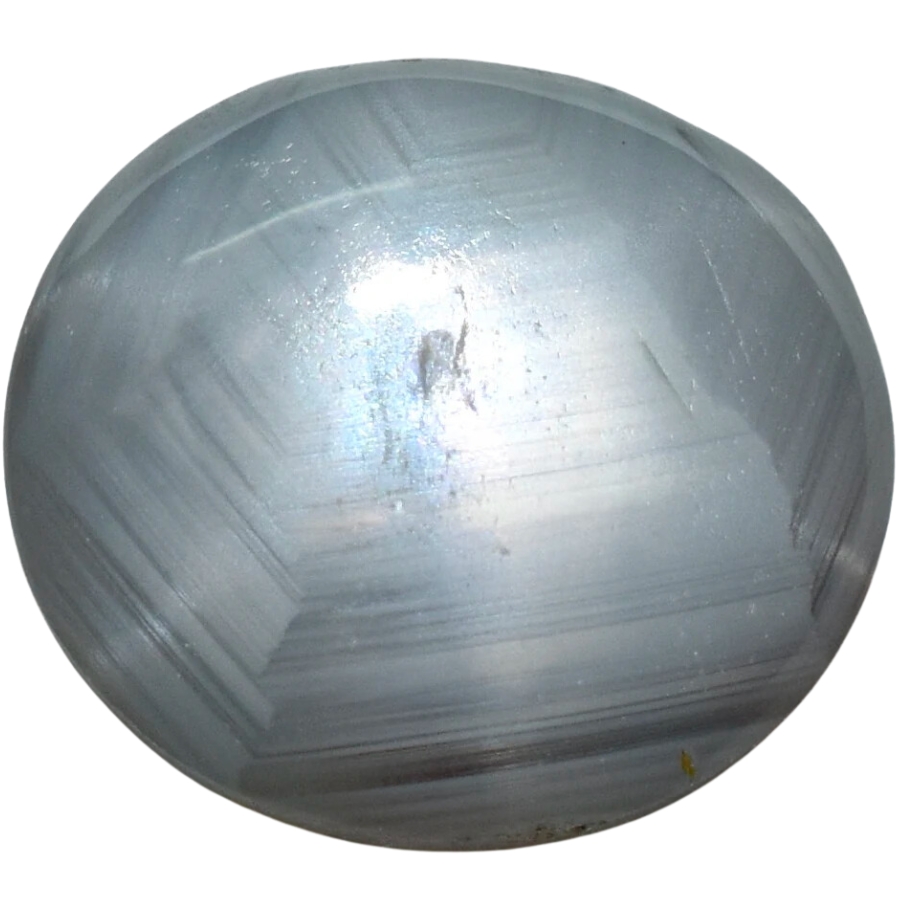
Star sapphire has been admired for centuries. This gemstone is known for its stunning star-like reflection, a phenomenon called asterism.
Historically, people believed star sapphires could protect and guide travelers and seekers. Kings and clergy wore them as symbols of wisdom and divine favor.
Sapphire’s worth lies not only in its beauty but also in its durability and the rarity of the star effect.
People value this beautiful light grey crystal for its unique, moving light display within it.
Analcime
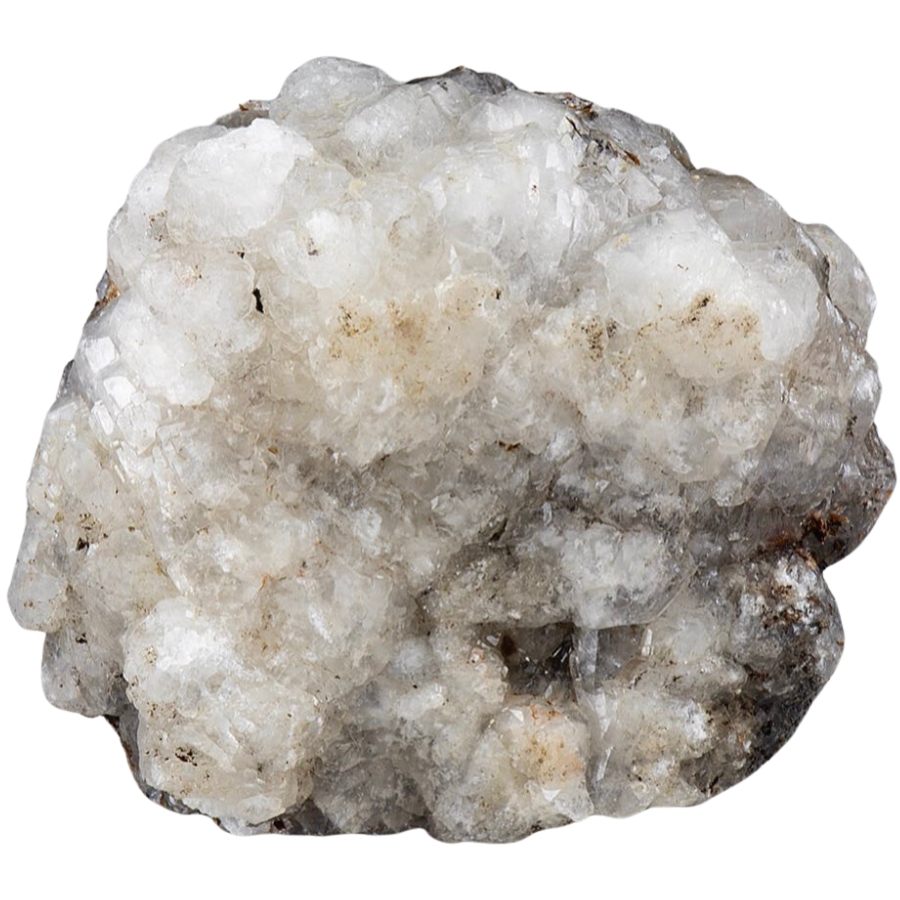
Another striking light grey crystal is analcime, and it was first recognized for its unique cubic structure in the 1800s.
Often found in volcanic rocks, it has intrigued collectors with its bright luster and neat crystal formations. It’s been used in some cultures for ornamental purposes due to its appealing look.
Analcime’s value comes from its rarity and the fascinating way it forms, capturing the interest of those who study and collect minerals.
It’s widely appreciated for its subtle beauty and the geometric perfection it represents. Its allure lies in its simplicity and natural elegance.
Sillimanite
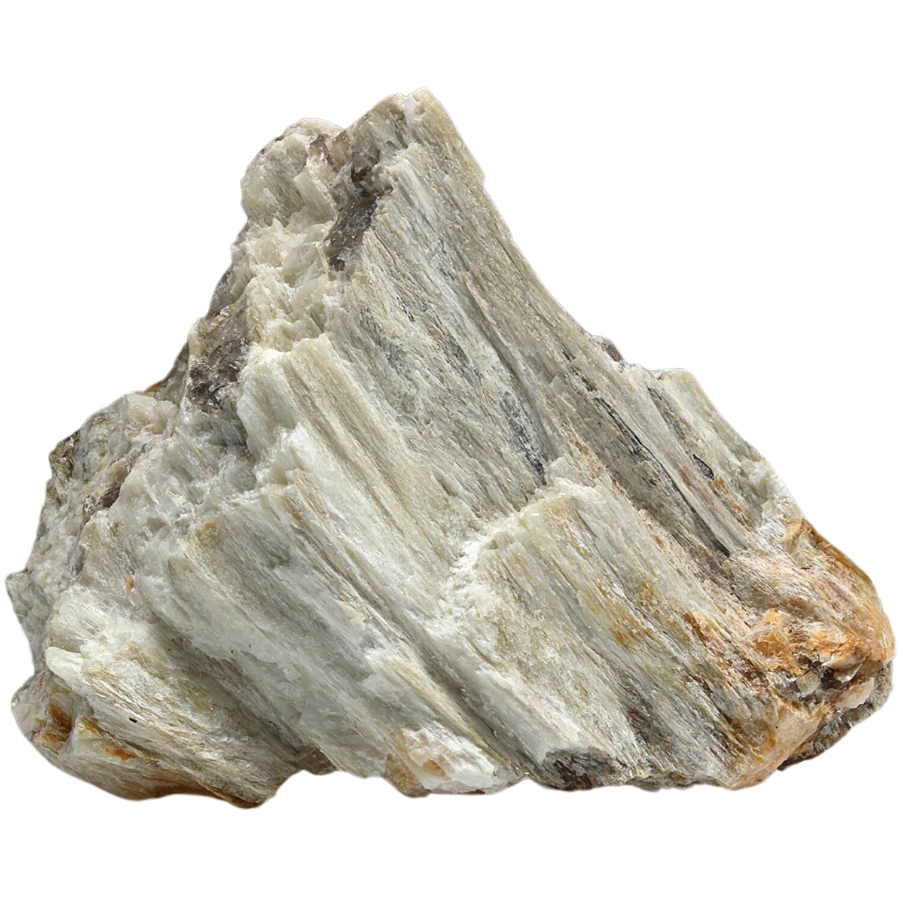
Sillimanite was named after the American chemist Benjamin Silliman in the early 19th century.
It’s known for its long, slender crystals and durability. It’s been used primarily in industrial applications, like in the making of high-temperature ceramics and refractory materials, due to its resistance to heat and wear.
Sillimanite’s value among collectors and enthusiasts comes from its rarity and the striking, fibrous beauty it displays when cut and polished.
This light grey crystal has been admired for its practical uses and the delicate, refined appearance that makes it distinct.
Anhydrite
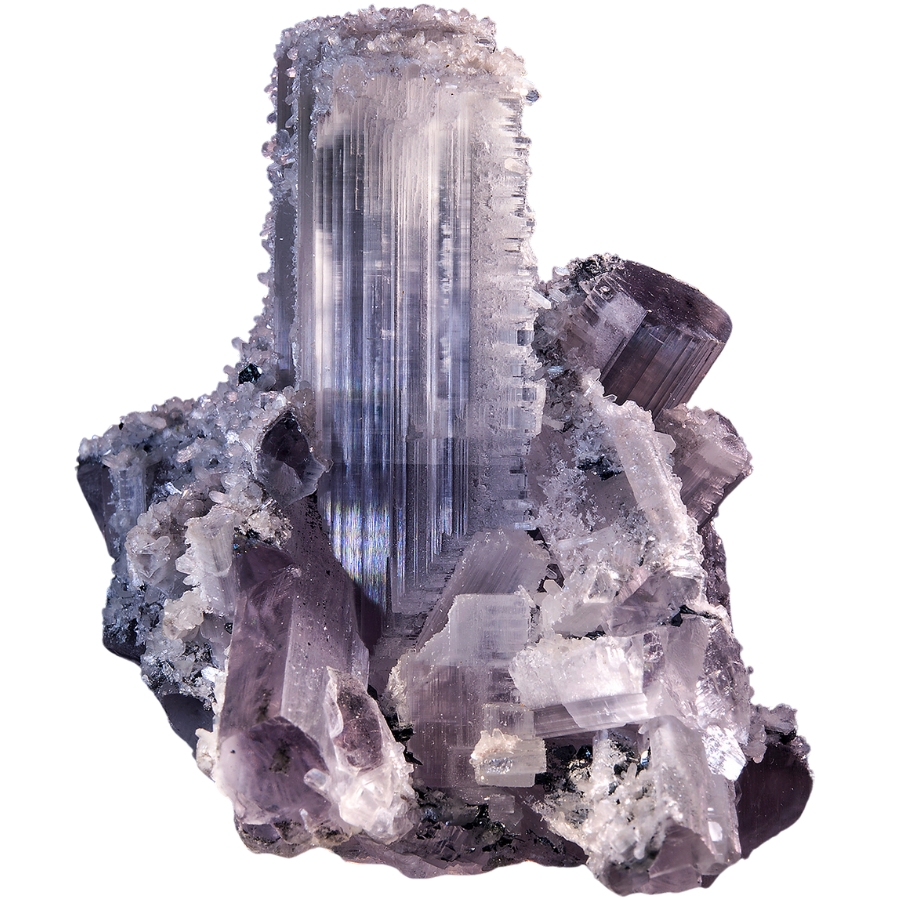
Discovered in the 18th century, anhydrite is named for its lack of water in its structure, unlike its close relative, gypsum.
Found in salt deposits and evaporite beds, anhydrite is often used in the production of plaster and as a drying agent in paints and varnishes.
Its value lies in its practical applications and its beauty as a specimen for collectors. While not as well known as other minerals, anhydrite is appreciated for its smooth, pearly luster and its role in understanding geological formations.
Its quiet, understated elegance makes it a special find for those who encounter it.

